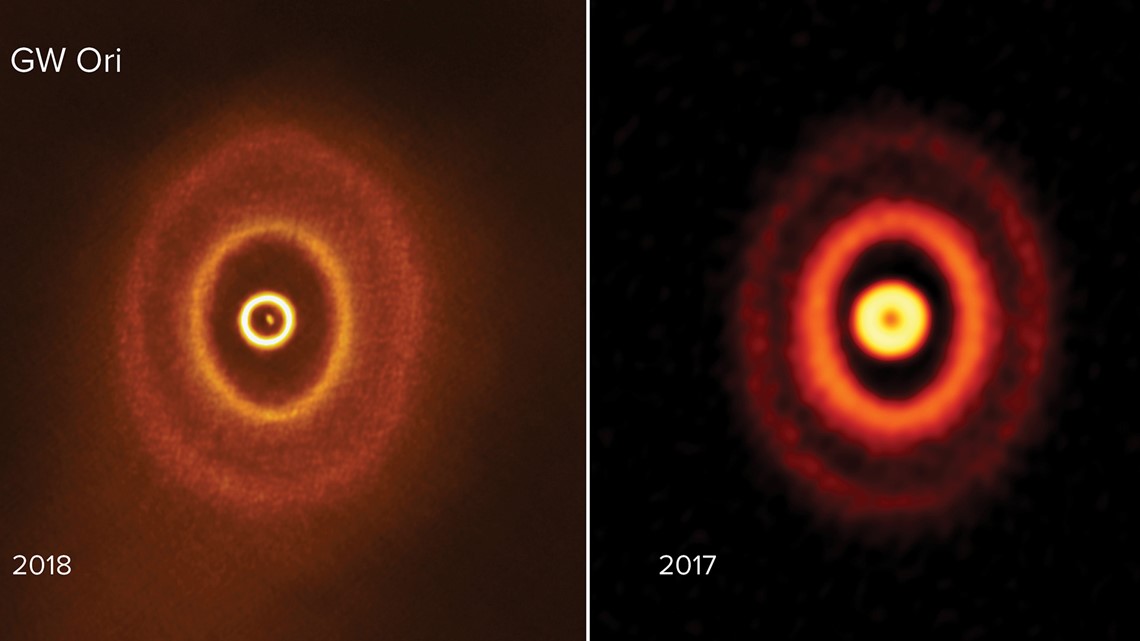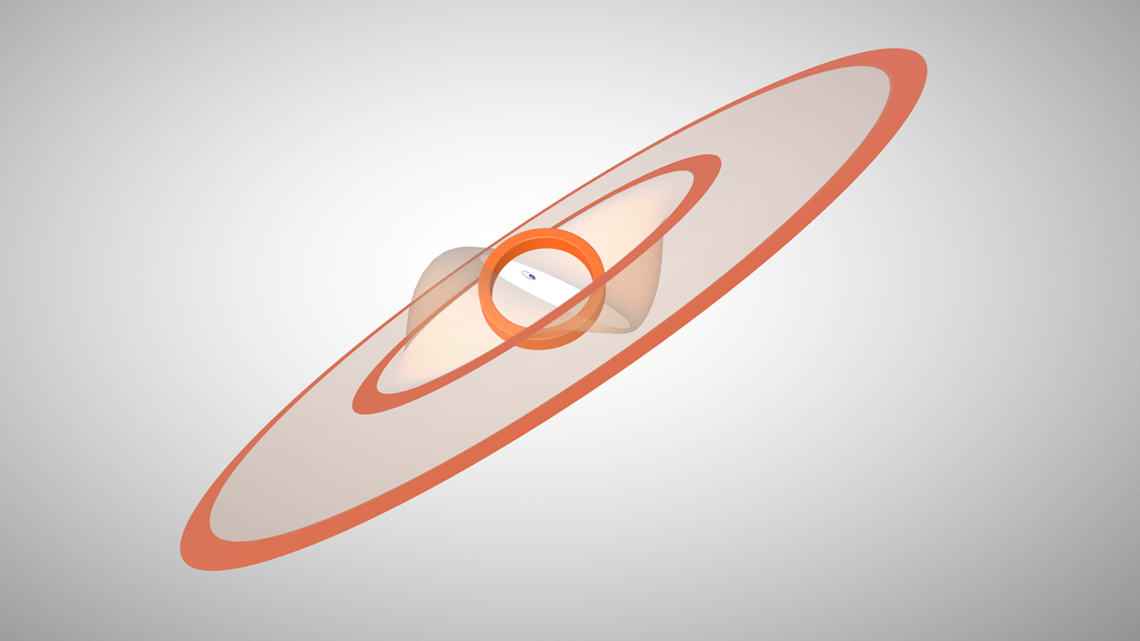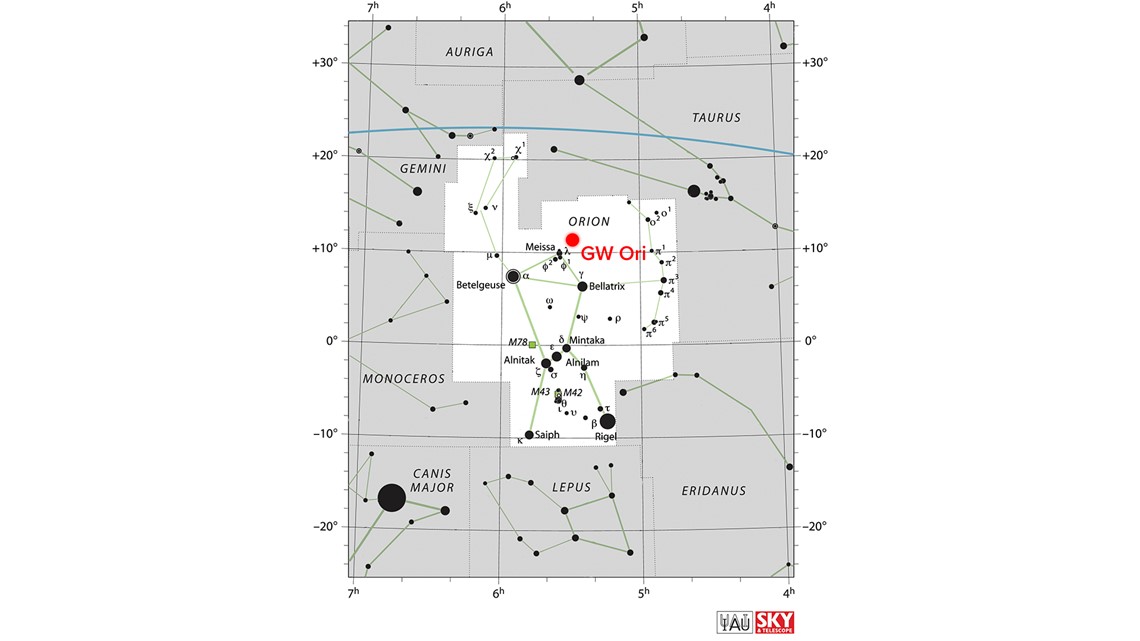Forget about Luke Skywalker's fictional "Star Wars" home planet Tatooine and its two suns. Astronomers say they may have found the first known planet that's caught up in the orbits of three different stars.
The rare triple-star solar system GW Orionis is 1,300 light-years from Earth in the constellation Orion. Imagine two suns orbiting around each other in an interstellar dance. Now, imagine a third star circling both of them about 1.2 billion miles away.
It was three bright rings around the system that helped astronomers at the Atacama Large Millimeter/submillimeter Array (ALMA) in northern Chile discover the phenomenon.


The inner ring is what caught astronomers' attention. It was misaligned compared to the two outer rings and the three stars, according to a statement by the National Radio Astronomy Observatory. If you were to look at the rings from their edge, the inner one would appear to be on a different plane than the outer two.


Astronomers in two separate studies looked at this and discovered that not only was that ring misaligned, so were the stars it surrounded.
There are a couple of theories as to what makes for this misalignment, one of which is the formation of a planet.
“We think that the presence of a planet between these rings is needed to explain why the disk was torn apart,” said Nienke van der Marel of the University of Victoria. “This planet has likely carved a dust gap and broken the disk at the location of the current inner and outer rings."
Stefan Kraus from the University of Exeter speculates the inner ring has enough dust to build 30 Earths, which he says is sufficient to form a planet within the ring.
Future studies will have to determine for certain what is happening in the unusual system.
The findings were published Thursday in the journal Science and on May 21 in the journal The Astrophysical Journal Letters.




